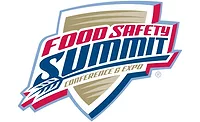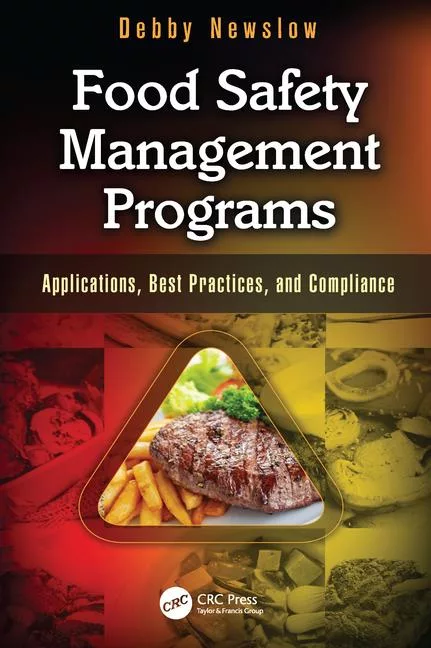What to Expect from SQF Modifications

While 2017 is a year for manufacturing facilities to augment their Food Safety Modernization Act (FSMA) programs for U.S. markets, 2018 will be a year to update their Global Food safety Initiative (GFSI) systems. Beginning in January, Food Safety System Certification 22000 advances to Version 4.1 and Safe Quality Food (SQF) advances to Edition 8.0, whereas the North American Issue #7 and the IFS Version 6 have existed for a few years. A large majority of the U.S. food industry utilizes the SQF private third-party certification system. In this article, we summarize the SQF 8.0 revisions and their impact on facilities who are, or plan to be, certified by SQF.
The entire set of new SQF 8.0 codes can be downloaded from www.sqfi.com (click on “Documents”). Some changes in Edition 8.0 involve general vocabulary, for example, the term “site” instead of “supplier,” will describe a facility named in a scope of certification. The term “prerequisite programs” has been changed to Good Manufacturing Practices (GMPs)/Good Distribution Practices/Good Agricultural Practices, etc. But the major updates to SQF 8.0 involve operational features:
• There are separate codes and separate audits for food safety and food quality. This has resulted in the extinction of the “Level System” in SQF: Level 1 for prerequisites, Level 2 for food safety and Level 3 for food quality. These are being replaced by an SQF “Fundamentals Code” (old Level 1), a “Food Safety Code” (old Level 2) and a separate SQF Code for “Food Quality” (old Level 3).
• In addition, there is an SQF Food Safety Code for Manufacturing, one for Storage-Distribution, one each for Packaging and Primary (Agriculture), and there is a brand new SQF Food Safety Code for Retail sites.
• Within each of the SQF 8.0 codes, there are major updates in SQF Systems Elements; these are sections of the code that apply to all facilities regardless of industry sector. Some of the updates are in response to the GFSI Benchmarking documents Versions 7, 7.1 and 7.2, published this year, and some are responsive to the regulations of FSMA by the U.S. Food and Drug Administration (FDA).
System Elements
SQF’s revisions to systems elements have increased the focus on site senior management. Edition 8.0 (Element 2.1.2.6) makes it very clear that it is the responsibility of site senior managers to ensure the integrity of the SQF system. Site senior management must assure that there is qualified staff to implement the SQF program at all times, even in the absence of an SQF practitioner or other key food safety staff. Additionally, site senior management must assure that staff has the necessary training to execute the SQF system. In effect, this communicates to facilities that lack of training, or lack of staff could generate a nonconformance against senior management, in addition to nonconformance in another applicable SQF clause. The increased involvement of site senior management is also seen in revised Element 2.1.3.2, which requires monthly, documented updates by an SQF practitioner to site senior managers, with corresponding senior management response.
In Edition 8.0, the food safety plan has been extended to include at least one clause that applies to each of the 12 steps in Codex Hazard Analysis and Critical Control Points (HACCP), or a total of 17 HACCP-related clauses. This is a substantial revision from Edition 7.2, which had only had one clause to cover all of Codex-based HACCP. Edition 8’s food safety plan also must consider requirements of FSMA and/or regulations of other specific jurisdictions. Clause 2.4.3.17 states as follows:
“Where food safety regulations in the country of production and destination (if known) prescribe a food safety control methodology other than the Codex Alimentarius Commission HACCP guidelines, the food safety team shall implement food safety plans that meet both Codex and food regulatory requirements.”
Element 2.4.3.17 implies that auditors review the four categories of FSMA preventive controls—process controls, allergen controls, sanitation controls and supply-chain applied controls—and also review, among other things, the preventive controls-expanded requirement for supplier approval programs; holding and distribution of human food by?products for use as animal food; and the requirement that verification of preventive controls monitoring must occur within 7 business days of the event.
Food fraud vulnerability is another area dealt with in the systems elements and is responsive to the GFSI Version 7.2 requirement for a, “documented food fraud vulnerability assessment.” In Element 2.4.4.4, SQF requires a food defense plan with actions to secure incoming materials and protect them from sabotage or terrorist activity. SQF 8.0 also requires an assessment of a site’s vulnerability to raw material adulteration that could impact food safety and further requires this assessment even with materials shipped from other facilities under the same corporate ownership. SQF-certified sites also must establish and implement mitigation steps to address vulnerabilities from ingredients and materials. A documented annual verification and review of both the food defense and mitigation plans is required as well. This upgraded SQF 8.0 requirement has similarities to the FSMA “Mitigation Strategies to Prevent the Intentional Contamination of Foods” regulation.
Laboratory and Environmental Monitoring
Section 2.4.8 brings on a new requirement in the systems elements in SQF 8.0. In prior editions, environmental monitoring was specified in food sector-specific modules and only for areas classified as “high risk.” The new code requires that all facilities, including pet food facilities, at minimum, conduct an assessment and decide whether environmental monitoring is needed. The responsibility and methods for the environmental monitoring program shall be documented and implemented, along with an environmental sampling and testing schedule to test for applicable pathogens or indicator organisms for that industry. Sites are also directed to perform trend analysis of lab testing results and generate corrective action for unsatisfactory results and/or trends.
There is also a new provision in SQF 8.0 requiring proficiency testing for onsite laboratory and sampling personnel (2.5.4.2). These individuals must undergo at minimum an annual proficiency test to ensure consistent and accurate results.
Other Areas
Among the updates and revisions in SQF 8.0 are those involving food packaging lines. Element 2.6.1.3 requires that sites take documented measures to prevent product mislabeling and/or incorrect product packaging. There is a requirement for a written procedure for packaging line start-up and changeover to ensure that the correct product and label are present. Additionally, an inspection and check by a second authorized person is required for verification of product/label and the procedure.
Quality Code (Formerly Level 3)
Quality measures are market-driven, whereas safety measures are health driven. Quality control involves procedures intended to confirm that a product complies with a defined set of criteria (such as size, shape, color, weight, viscosity, etc.) to meet customer need. Clause 3 of ISO9000:2015 defines quality as, “…degree to which a set of inherent characteristics of an object fulfils requirements.” Put simply, a product has good quality when it meets the requirements specified by the client (or the site with the client’s agreement).
Quality standards and safety standards have always been separate in the SQF code. With Edition 8.0, the separation is further extended; there is an SQF Quality Code and quality audit that are separate from the food safety code and food safety audit. New auditor criteria for the SQF quality code implies that auditors who have performed SQF audits at Level 3 under earlier editions may or may not be qualified to perform audits for the SQF quality code. Likewise, there are new criteria for SQF quality trainers. In addition, the role of the SQF quality practitioner is similarly changed. For example, quality code Element 2.1.2.5 requires the SQF quality practitioner to “…be competent in statistical process control (SPC) and/or other quality tools to reduce process variation and drive root cause analysis of nonconformities.”
The SQF quality code also calls for senior management to develop and implement a quality communications program, and there is an option for a corporate audit for quality certification. Quality attributes must be part of the site’s Food Fraud vulnerability assessment and mitigation plans. Susceptibility to ingredient or product substitution, mislabeling, dilution and counterfeiting that could adversely impact food quality (Elements 2.7.1 and 2.7.2) must be considered.
Sites must already be certified to one of the SQF food safety codes in order to qualify for the SQF quality certification. As previously stated, these are separate audits, although a site can elect to have a combined audit for food safety and food quality. There is no score or rating for SQF quality system audits. The score and ratings that apply to SQF food safety certification audits do not apply to the SQF quality code, even if the quality system audit is conducted contemporaneously with food safety audit.
The SQF quality code uses the term “deviation,” in lieu of “nonconformance.” Deviations can be classified as minor or major. No critical deviations can be raised at an SQF quality audit. Although the SQF quality audit will not be scored, a quality surveillance audit is conducted when the site has two or more major deviations and/or 10 or more minor deviations raised during an audit.
Food Sector Category Changes
The facility classifications for several SQF food sector categories have been modified. In addition, some foods have been relocated into a different food sector category. Most notably, operations which handle or process nuts will shift into food sector categories for produce and/or other fruit/vegetable operations.
Conclusion
This article identifies a few of the more important changes that will significantly impact SQF-certified food processors starting at the beginning of January 2018. In order for current SQF certified sites to put themselves in a position to have a successful food safety and food quality certification audit, it is strongly recommended that at least two individuals from each food manufacturing site attend the SQF 8.0 update training offered by a certified SQFI training center. Companies may also choose to hold additional in-house trainings and assessments measuring against the SQF code through the help of consultants who are well trained in these specific areas.
The SQF 8.0 certification audits begin in a few short weeks, and it is never too early for SQF Practitioners and senior site managers to start upgrading their existing SQF programs, obtain the training to do so and establish an SQF 8.0 “plan of action.”
Susan Moyers, Ph.D., M.P.H., has more than two decades of experience in developing, training and auditing food safety, quality and dietary supplement management systems. She is an SQF-certified consultant and trainer, a lead trainer for FDA’s Preventive Controls and Foreign Supplier Program rules, and a consultant, auditor and trainer for dietary supplement Current GMPs and HACCP systems.
Allen Sayler is the Senior Director for food and cosmetic consulting services at EAS with expertise in the areas of food processing, particularly in the area of dairy processing, infant formula, bakery products, food additives, botanical products and food packaging as well as GSFI third-party certification programs such as SQF. He has spent more than 30 years as a food processing and regulatory expert, with half of the time serving the industry and the other have as a state and federal government employee.
Looking for quick answers on food safety topics?
Try Ask FSM, our new smart AI search tool.
Ask FSM →








